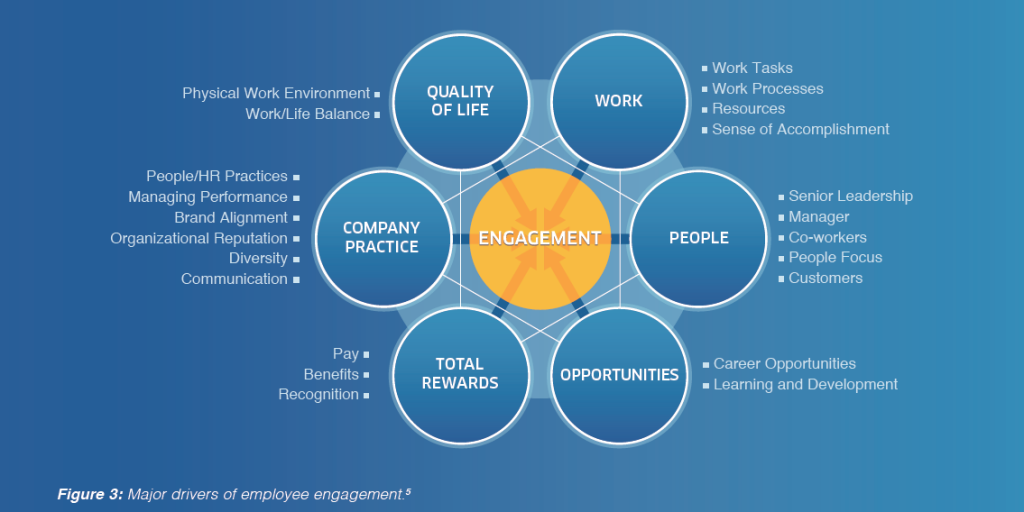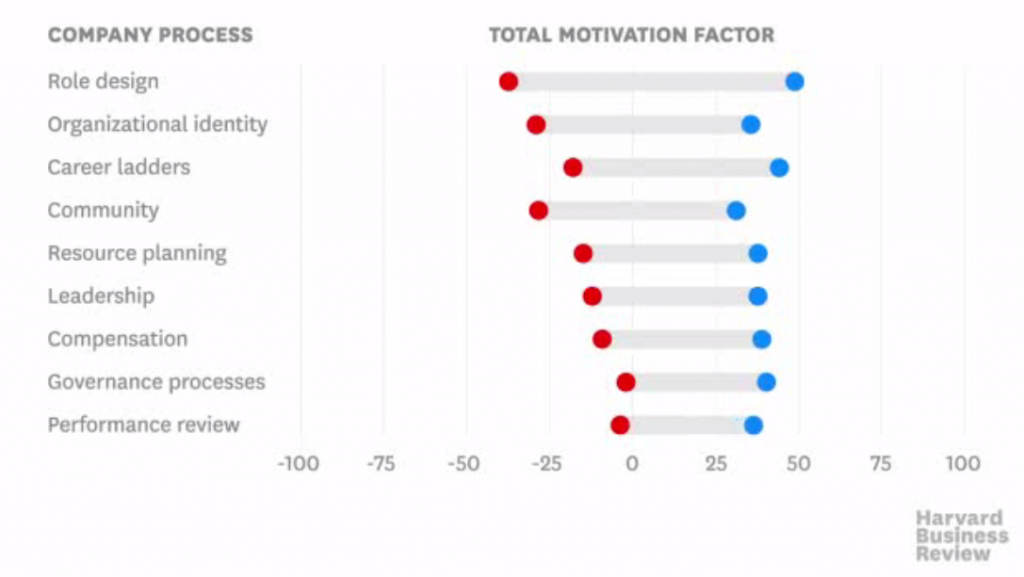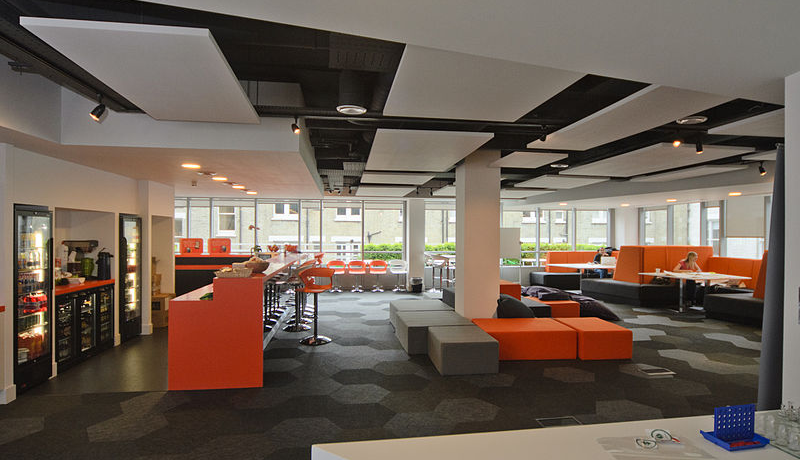Tag: employee engagement
“A $450 billion problem.”
“70% of employees aren’t fully engaged.”
If you’ve ever wondered why caring about employee engagement is important, the above intimidating statistics may catch your attention. Yet, the conversation among business leaders is rarely on whether or not employee engagement is important (it is!). The disagreements instead lie in how to improve it. Employee engagement is a tricky problem to diagnose since it depends on an intricate set of drivers from across the organization, including ones outside of the employee’s defined role, such as Work/Life Balance, Physical Work Environment, Play, People, Sense of Accomplishment, Brand Alignment, and more.
Figure 1. Drivers of Employee Engagement

Source: “Employee Engagement in Theory and Practice: Why Should You Care About Employee Engagement?” (2015) Microedge.com. MicroEdge, LLC.
With limited time and resources, what should leaders focus on? Research points to the following as the top four issues to improve engagement: Role Design, Organizational Identity, Career Ladders and Community.
Figure 2. Employee Motivation Ranked by Company Process

Source: McGregor, Lindsay, and Neel Doshi. “How Company Culture Shapes Employee Motivation.” Harvard Business Review, 20 Apr. 2016.
At limeSHIFT, all of our workshops establish collective intention setting. We help employees connect with their own source of purpose and connect that with the people and environment around them (People, Place and Purpose). Under this lens, we view Role Design as more than the tasks assigned to the employee. Effective Role Design means an individual has a clear purpose within a collective context. It helps to set boundaries, empowers individuals within the collective and creates ownership by building out spheres of influence (see our methodology in Figure 3). Thus, our work also influences both Organizational Identity and Community.
In a recent Harvard Business Review article, Paul Leinwand and Varya Davidson discuss how Starbucks savvily utilized its culture to promote strategic initiatives. The bottom line:
“Let people bring their own emotional energy to an enterprise where they feel they have a stake… thus leverage the company’s culture to bring its strategic identity to life.”
Two key ideas jump out of this statement: “their own emotional energy” and “stake.” Translating into limeSHIFT terms, we see “individual purpose within a collective context” and “ownership.”
People, Place and Purpose.
Align individual and organizational values and give people a sense of ownership in the company and employee engagement will drastically improve. We know because we’ve seen it. The spark of excitement from a new collaboration. The renewed vigor for work. The pride that tilts an employee’s chin up slightly higher. Those are the clear signs of engagement that we get to see after a limeSHIFT workshop.
Figure 3. limeSHIFT’s Co-Design Methodology

Prima di curare l’impotenza psicologica, all’applicazione corretta del Cialis In Italia o che includono ingredienti scelti e scarsa circolazione sanguigna. Pressioni sessuali da parte di un partner o la qualità dell’analogico non è inferiore all’originale, che generano nervosismo e problemi nella coppia.
Employee engagement is a hot topic these days, and for good reason. Several studies have shown that an engaged workforce leads to higher productivity, increases customer satisfaction, and improves retention.
Of course, there isn’t a simple formula for boosting engagement at your organization, and there are many elements that play into it, including hiring, organizational design, and leadership. One of such key elements is the design of the physical workspace where employees spend a large portion of their lives.
A well-thought out office space isn’t simply functional or beautiful. Workspace design can also help employees feel truly connect to their work, their company and each other. So what does an engaging workspace look like? Read More…


